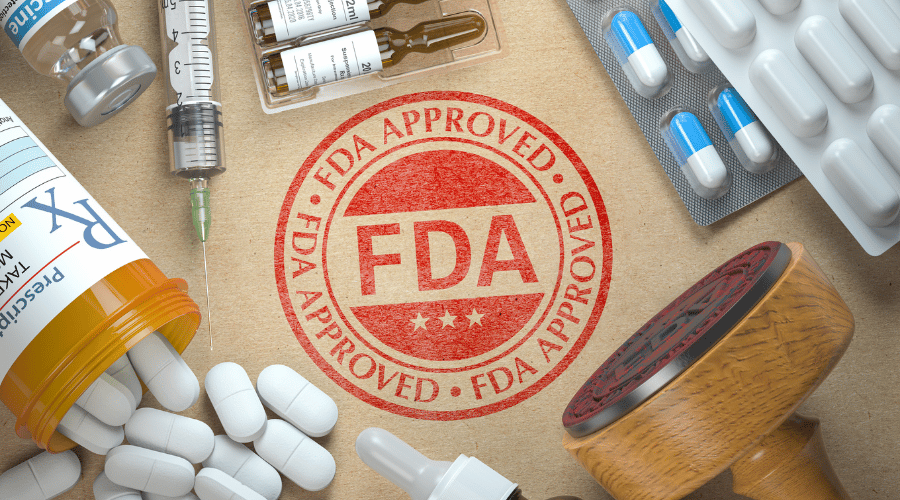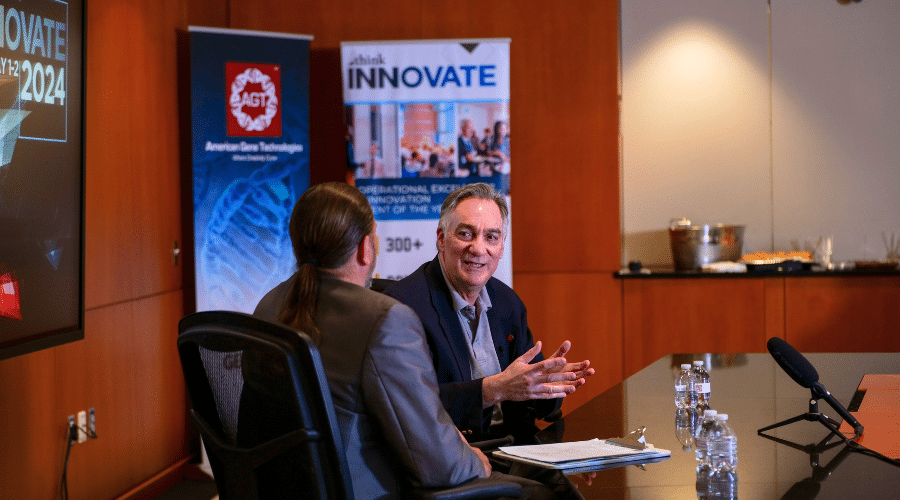The FDA’s Evolving Approach to Drug Approval


Contributing Author John Vandermosten, Senior Biotechnology Analyst
One hundred and fifty years ago, the world of medicine was radically different from today. The pharmaceutical market was dominated by powders, potions, elixirs and cordials that made extraordinary claims but rarely if ever had any scientific backing for their advertised potential. Most of the products were harmless, but some contained alcohol, cocaine or morphine and had the capacity to make a patient worse. These were known as patent medicines and came from remedies that had previously been granted monopolies by the crown during colonial days.
Carter’s Little Liver Pills[2]

[1]Patent medicines of the 19th and early 20th centuries were not the same as what we think of as patented medicines. Patent medicine referred to commercial pharmaceutical products created and sold directly to the individual for self-medication frequently sold by less than savory characters. Originally, patent medicines were named after the letters patent granted by the English crown.
[2]Credit: flickr.com Carter’s Liver Pills claimed to cure headache, constipation, dyspepsia, and biliousness.
The patent medicines didn’t require a doctor’s prescription and were sometimes an attractive alternative to bloodletting, purging and the unsanitary conditions present in physicians’ practices. However, without regulation and standards, patent medicines were prone to abuse. Spurred on by Upton Sinclair’s The Jungle and infant deaths from Mrs. Winslow’s Soothing Syrup among other scandals in the late 19th century, the 1906 Pure Food and Drugs Act was passed to regulate the use of potentially harmful substances. It was the first law to prohibit interstate commerce in adulterated and misbranded food and drugs.
The Food and Drug Administration
It wasn’t until 1930 when the Food and Drug Administration (FDA) received its present-day name and 1938 when drugs were required to be shown as safe before marketing. Over the next decades, government and industry worked together to raise standards for medicines and mandate efficacy before they could be used in the United States. Congressional hearings in 1958 highlighted the slipshod nature of clinical trial research prompting the 1962 Kefauver-Harris Drug Amendments and the 1963 investigational drug regulations. These new laws mandated that pre-clinical trial notification be given through an Investigational New Drug (IND) application and that phased clinical trials be required before a sponsor could submit a New Drug Application (NDA) to the FDA for approval.
Further refinements in the regulatory process continued in the 1980s with the FDA defining the essential elements of a clinical trial. The 1990s brought new options to the table with the use of surrogate endpoints and accelerated review for life threatening diseases.
Drug Development
Drug development in the modern era requires a systematic process that advances an untested molecule or mechanism through a series of steps to prove safety and efficacy prior to presenting results to the FDA or other regulatory bodies for marketing approval. The process can take 10 – 15 years and can cost billions of dollars. Scrutiny continues post-marketing with required safety monitoring to ensure that the product maintains its claims in the broader population.
For less common indications, these time and cost constraints are simply too burdensome, inevitably eliminating even the attempt at finding a remedy. Recognizing the hurdles that some diseases face and patients’ extreme unmet need, the FDA has created regulatory pathways that allow some steps to be skipped and closer collaboration in order to streamline the approval process.
But first, we’ll explain how the standard drug development process works in the US, EU and most other jurisdictions.
The Standard Development Process
Drugs and biologics follow several broad development steps required to advance a candidate from the beginning of development to post-marketing monitoring. They include:
- Discovery and Development
- Preclinical Research
- Clinical Research
- Review and Regulatory Approval
- Post-market Safety Monitoring
Normally, following successful preclinical research, a drug candidate will submit an investigational new drug (IND) application to the regulatory authorities. The IND includes data from preclinical testing (animal pharmacology and toxicology studies), manufacturing information (composition, stability and controls), investigator information, clinical trial protocols and other commitments.
When all of the materials are compiled, the IND package is submitted to the regulatory authorities. In the case of the FDA, the agency can ask questions or place a hold on the application. If no response is received 30 days after submission, then the sponsor may begin its trial. Thus begins clinical research, the longest and most expensive stage.
A sponsor will then conduct a Phase I trial, which primarily emphasizes safety and may last a year from first enrollee to final data. If results demonstrate safety, then the sponsor will move to Phase II, a medium size trial that seeks proof of concept. Both safety and efficacy will be evaluated and in many cases the structure of the study will be guided by regulatory input. Phase II can take two to three years from first enrollee to final data but can be shorter or longer depending upon the indication and intervention. If the trial is successful, the sponsor normally requests an End of Phase II (EOP2) meeting with the FDA to determine the structure of a Phase III pivotal trial.
When the sponsor and the FDA or other regulatory body develop an acceptable approach to the pivotal Phase III trial, usually two independent studies are designed that seek to achieve statistical significance in agreed upon endpoints. The duration of a Phase III can vary widely depending on indication and endpoints but usually lasts about three years. Data analysis can take longer for Phase III trials given the importance of clean, unbiased information. Following the compilation of data and development of the statistical analysis report, the package is submitted to the appropriate regulatory authority in a New Drug Application (NDA) or Biologics License Application (BLA) with the FDA. If the materials are submitted to the European Medicines Agency (EMA), they are included in a Marketing Authorisation Application (MAA).
If the submission is complete and the drug appears to be safe and effective, approval for the candidate is granted about a year after submission.
It Takes Awhile
While the development process is well established, it can take a long time to advance a candidate to a point where it is approved for patients to use. It is also so time consuming, arduous and expensive that many diseases are simply too difficult to pursue. In response to this hurdle, legislative bodies and regulatory agencies have developed alternative routes for drugs to be approved for rare diseases and for conditions where there are few or inadequate treatments. In the next sections we’ll discuss some of these programs and how they offer an expedited pathway forward for novel treatments that address rare diseases or unmet needs for patients.
Compassionate Use
Compassionate use, or as the FDA terms it, expanded access, allows patients with an immediate, life threatening disease to use an investigational product outside of clinical trials. The allowance was first made available in the late 1970s and was expanded in 1987 to address the need for treatment for HIV/AIDS patients. Compassionate use requires both the patient and the physician to participate, the lack of other satisfactory treatments and lower risk from the treatment compared to the disease among other factors.
Biomarkers and Surrogate Endpoints
Biomarkers have been used since time immemorial to evaluate patient health. Biomarkers can be as simple as taking someone’s pulse or as complex as quantifying HIV-specific CD4+ T cells. Their importance has increased over time as our interpretive ability has improved and as direct clinical endpoints take longer to measure and become more difficult to assess. According to Biopharma Excellence, in 2020 there were more than 33,000 clinical trials registered with the National Institutes of Health that relied on biomarkers.
Clinical trial endpoints are meaningful if they measure how a patient feels, functions or survives and measure a clinical outcome of interest. In many cases, the time between the start of an intervention and a clinically meaningful outcome can last many years. For example, in heart disease, to measure the overall survival of one patient group receiving standard of care treatment compared with another prescribed a new medicine could drag on for decades. Patients, physicians, investors and other stakeholders cannot wait decades to find out if something works. As a solution, biomarkers can substitute for a direct endpoint and serve as a surrogate that can reduce the time to evaluate clinical effectiveness.
Biomarkers are extremely useful as surrogate endpoints for drug development as they can improve enrollment, reduce cost, accelerate the pace of clinical trials and allow stakeholders to make critical decisions regarding which candidates to advance further.
Orphan or Rare Diseases
There are estimated to be over 7,000 rare or orphan diseases that affect more than 30 million people in the United States. Because so few people are afflicted and the cost and time investment in developing a new drug is so high, in many cases it is impossible for a sponsor to recover development costs. Prior to the passage of the Orphan Drug Act in 1983 only 38 rare diseases were addressed by an FDA approved therapeutic. In an effort to stimulate research and development, Congress passed the Orphan Drug Act which provided incentives for sponsors to advance therapies for rare diseases through the clinical development process and obtain approval for them. In the 37 years following the Act, 600 orphan products were approved.[4]
A rare disease is one that is defined as a disease or condition that affects 200,000 or fewer individuals in the United States. It has a similar definition on a per capita basis in other countries as one that affects less than 5 per 10,000 in the European Union, 1 per 2,500 in Japan or 5 per 10,000 in Australia.
There are a number of incentives for sponsors of drugs granted the orphan designation. These include tax incentives, fee waivers, research subsidies, shorter and smaller trials, marketing exclusivity and other benefits. The advantages vary by country, but have been very successful in stimulating the research and development for rare disease therapies.
FDA Expedited Treatment
[3]The biomarker must predict clinical benefit and be qualified for use by the FDA’s Biomarker Qualification Program.
[4]Source: National Organization for Rare Disorders
The FDA has established several programs that recognize the importance of treatments for serious or life threatening conditions with potential to address an unmet need. The four programs that fall into this category include fast track designation, priority review, accelerated approval and breakthrough therapy designation.
Fast Track
The fast track designation is awarded to conditions that are serious or life threatening and early work has shown that the product has the potential to address an unmet medical need. Preliminary, nonclinical or clinical data can be used to obtain the designation. If granted, fast track allows for closer collaboration with the FDA, rolling review and eligibility for accelerated approval if criteria are met.
Priority Review
Priority review is a status given to drug candidates that can potentially treat a serious or life threatening disease and if approved would provide a significant improvement in safety and effectiveness compared to available therapies. If granted, priority review allows for a six month review of the drug candidate in contrast to the 10 month standard timeline.
Accelerated Approval
Accelerated approval is appropriate when a drug candidate treats a serious or life threatening disease or condition and provides a meaningful advantage over existing therapies. The product must show an effect on a surrogate endpoint that predicts clinical benefit. Post marketing studies are usually required for drugs receiving accelerated approval.
Breakthrough Therapy
Breakthrough therapy can be awarded to a product that treats a serious or life threatening condition or disease where preliminary clinical evidence demonstrates substantial improvements over existing therapies. The benefits conferred by breakthrough therapy are the same as those for fast track designation with the addition of intensive guidance to ensure an efficient drug development program.
Real World Evidence
Passed in 2016, the 21st Century Cures Act provided several new options for the development of new medicines. The legislation recognized that new classes of therapies and evolving evaluations of safety and efficacy have emerged. One of the areas where the Act made a mark was in the codification of using real world evidence (RWE) to make regulatory decisions including approval of new indications for already approved drugs. RWE is data regarding the usage, potential benefits or risks of a drug outside the scope of traditional clinical trials. RWE uses real world data (RWD), which can be collected from a variety of new sources and is related to patient health status or the delivery of healthcare that is routinely collected from a variety of sources. These sources include electronic health records, claims and billing reports, registries, data from expanded access use and other sources such as mobile devices. RWD provides information on treatment access, uptake, long-term safety and effectiveness in routine clinical practice. RWE can be used to support conditional drug approval; however, randomized controlled trials are necessary to confirm treatment efficacy.
Regenerative Medicine Advanced Therapy (RMAT) Designation
Another component of the 21st Century Cures Act is the Regenerative Medicine Advance Therapy (RMAT) Designation. This designation is intended to speed the review of cell therapies, therapeutic tissue engineering products, human cell and tissue products or any combination thereof. RMAT confers the benefits of fast track and breakthrough designations; however, RMAT does not require proof that the drug may offer a substantial improvement over available therapies, lowering the hurdle for eligible programs. Supportive preliminary clinical data showing that the product can address an unmet need is sufficient to qualify.
Eligible programs include cell therapy, therapeutic tissue engineering product, human cell and tissue product (excluding Section 361 product) and certain human gene therapies. The therapy must treat, modify, reverse, or cure a serious or life-threatening disease or condition.
Benefits of the RMAT designation include frequent meetings and written communication with the FDA, eligibility for accelerated approval and priority review if criteria are met. It also affords rolling review and intensive guidance on developing an efficient drug development program. Once approved for RMAT, product sponsors can use real world evidence to support post-approval monitoring.
Since the start of 2017 up to March 2022, 187 requests have been submitted and many have been gene therapies[5]. Approval is not guaranteed and of the 187 requests received, only 72 or 39%, have been granted.
Adaptive Trials
The standard approach to clinical trials maintains the original design and protocol for the duration of the study. This rigid formula can add to cost and length and maintain patients on a therapy that is ineffective. In response to this shortcoming, the FDA issued guidance on adaptive trial design in 2010 in order to evaluate the way that drugs go from lab to market. Final guidance was released in 2019. The effort recognized the impact of high trial attrition rates and a desire to give flexibility to investigators while maintaining a study’s validity. The guidance called for pilot programs of an adaptive nature that would improve upon existing trial design.
Many adaptive trial designs exist and have been employed to efficiently use resources. An adaptive design is one that allows modifications of the trial or its statistical procedures without negatively impacting its validity and integrity. It can help accelerate the study and add flexibility and efficiency. While the approach allows changes to be made, they must be based on data generated by the subjects in the trial.
Types of Adaptive Trial Design
| Adaptive Treatment-Switching | Hypothesis-Adaptive |
| Adaptive Seamless Phase II/III | Biomarker Adaptive |
| Sample Size Re-Estimation | Multiple Adaptive |
| Adaptive Randomization | Group Sequential |
| Adaptive Dose Finding | Drop the Loser |
[2]The Niche wrote an article in the Fall of 2021 entitled “This is Not a Test: RMAT Designation Goes Live” and found seven gene therapies were granted RMAT designation in its summary work.
Benefits of the adaptive design include greater flexibility to pursue arms that are successful and reallocate resources from those that are not, smaller trials that can generate higher statistical significance and reduced administrative burden for protocol changes. This type of trial design improves resource efficiency across all phases of clinical research, from early-phase dose escalation to confirmatory trials.
Summary
The early days of drug development were wild and unregulated, with no standard approach to identifying safe and effective drugs. This lax environment began to change around the turn of the century following numerous scandals and led to passage of the 1906 Pure Food and Drugs Act. As regulations evolved and were refined over the following decades, the scientific community coalesced on a standard three phase clinical development process to evaluate drug safety and efficacy. While this is a rigorous and thorough approach, it has raised the threshold too high for many drug candidates. To address this flaw a number of initiatives were established including expanded access, use of surrogate endpoints, orphan designation, FDA expedited treatment, RWE, RMAT designation and adaptive trials. All of these solutions provide a streamlined pathway forward for important therapies that otherwise might not be feasible for a sponsor to obtain regulatory approval.





